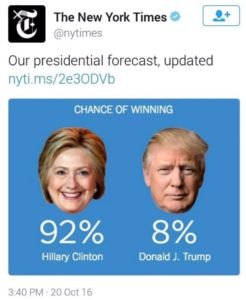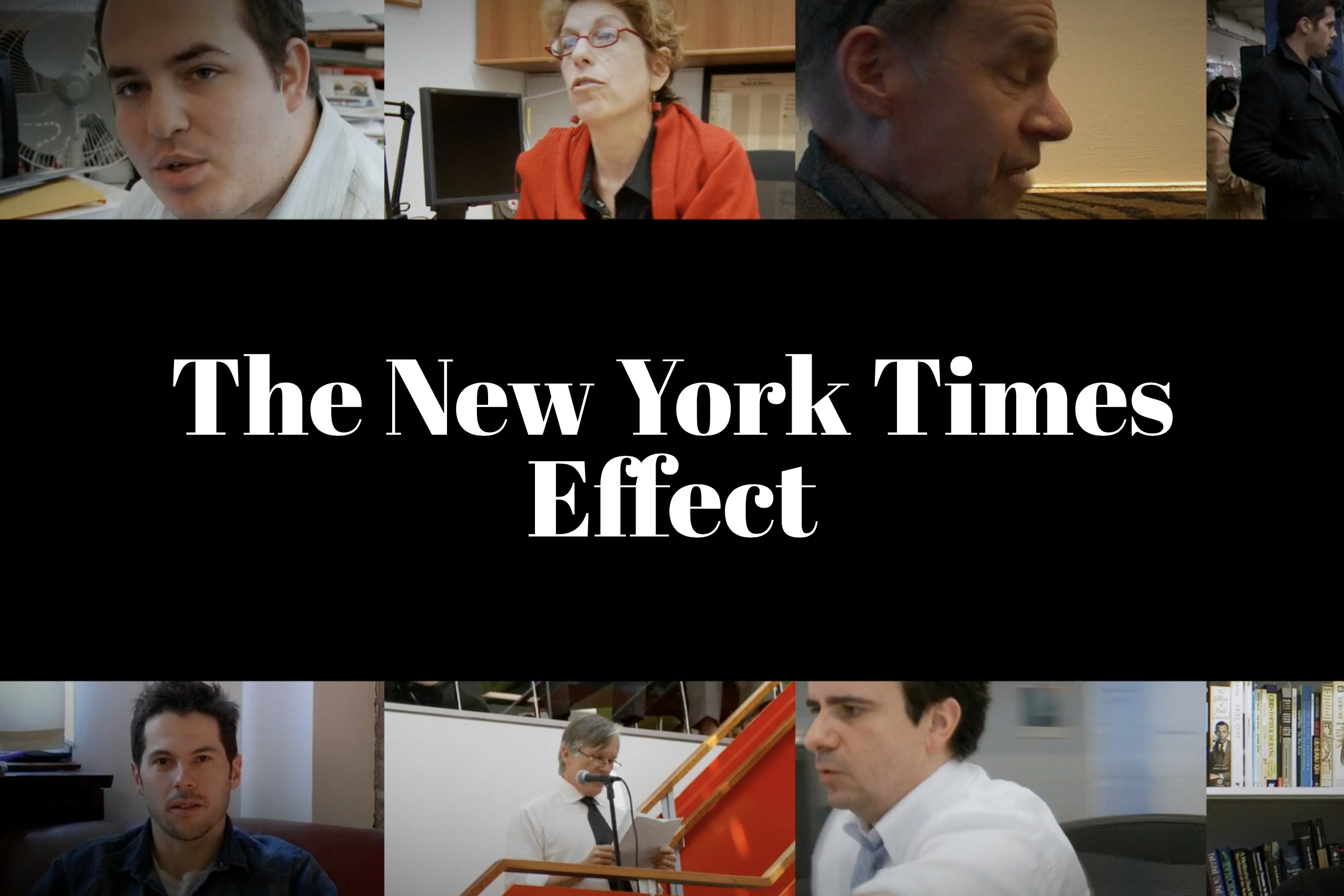 The New York Times Effect describes the influence this newspaper organization has in setting the global news agenda. With 1,300 newsroom staff and long history, The New York Times has been at the top of the news media dominance hierarchy for decades.
The New York Times Effect describes the influence this newspaper organization has in setting the global news agenda. With 1,300 newsroom staff and long history, The New York Times has been at the top of the news media dominance hierarchy for decades.
The influence The New York Times has over society is well beyond its own 4 Million readers.
When The New York Times runs or ignores a story, many other new outlets follow suit, thus amplifying the editorial position on a grand scale. “The Times, still to a remarkable degree, does set the agenda.” said Michael Hischan in the Page One: Inside the New York Times documentary.
The New York Times effect, also known as the “Gray Lady effect,” refers to the tendency of other news organizations to follow the lead of the New York Times on a particular story. The Times is known for its thorough and in-depth reporting, and its journalists are often the first to break major news stories. As a result, other news outlets may follow the Times’ lead on a story and report on it, giving the Times significant influence in the news cycle.
The Times’ influence can also be seen in its editorial decisions, such as which stories to cover and how to cover them. The Times’ editorial choices can set the tone for how other news outlets approach a particular story, and can even shape public opinion on certain issues.
In addition to its influence on other news organizations, the New York Times also has a significant impact on stock prices. Its financial reporting is closely followed by investors and can often cause stock prices to rise or fall based on the information it presents.
The New York Times Effect according to Pareto Distribution
The Pareto principle was originally used to described the phenomena of a small fraction of the population controlling a large portion of wealth. Also know as the 80-20 rule, the Pareto principle occurs naturally across leading professionals in the arts, business, and sports.
Take Opera singing for example. Luciano Pavarotti was one of the greatest Italian tenors at the top Opera world for many years. Like Pavarotti, The New York Times has been at the top of the news hierarchy for many decades.
New York Times Liberal Bias
One example of the Times’ liberal bias can be seen in its coverage of political issues. The Times often covers stories and events from a liberal perspective, and its reporting and editorial commentary often reflect this perspective. For instance, the Times has been critical of conservative politicians and policies, and has frequently endorsed liberal candidates and causes.
Another example of the Times’ liberal bias can be seen in its coverage of social issues. The Times has often taken liberal positions on issues such as gun control, climate change, and social justice, and has frequently published articles and editorials that support these positions.
In addition to its political and social bias, the Times’ liberal bias can also be seen in its choice of sources and experts. The Times often relies on liberal sources and experts for its reporting, and may downplay or ignore alternative viewpoints. For instance, the Times may quote liberal politicians and activists more frequently than conservative ones, and may give more weight to the opinions of liberal experts and academics.
The Demise of The New York Times
The incredible power to influence society makes the news business a hot topic for discussion. The pending demise of The New York Times has fascinated media observers and the general public for decades. Today you still hear media pundits repeating with excitement the familiar narrative that “the Times will be bankrupt in 6 months”.
Plenty of evidence suggests the traditional newspaper business model is at the end of its life cycle. Yet an institution like The New York Times seem to hang on. For how long – no one knows.
Donald Trump’s victory in the 2016 Presidential Election surprised many people. Especially readers of The New York Times, who trusted the poll on the front-page suggesting Hillary would win by a large margin. Not only was the poll wrong, it forced The New York Times to issue an apology to readers for their willful blindness.
The results of the election sparked a wave of Google searches on the term “Fake News“. A term coined by incumbent President Donal Trump to describe the dishonest mainstream media. Since then President Trump has called for much higher standards from The New York Times.
Quality and Quantity Equation
Producing timely reports from around the world requires a large operation of professional journalist. With a news staff of 1,300 people around the globe, the Times has one of the largest newsrooms in the world.
To appeal to a large audience a news organization needs to produce content on many topics. The quality and depth of such content must also be high to appeal to the upper levels of society.
Financial ability to support a global news operation
Wages and benefits for newsroom staff cost the Times $362,750,000 in 2017. Maintaining this newsroom, when print advertising revenues continue to drop, is likely one of the greatest challenges for management.
The Geographic Advantage
Being in the center of the business world in New York City brings a geographic advantage. Location is an important factor for the Times to hold its leading position.

